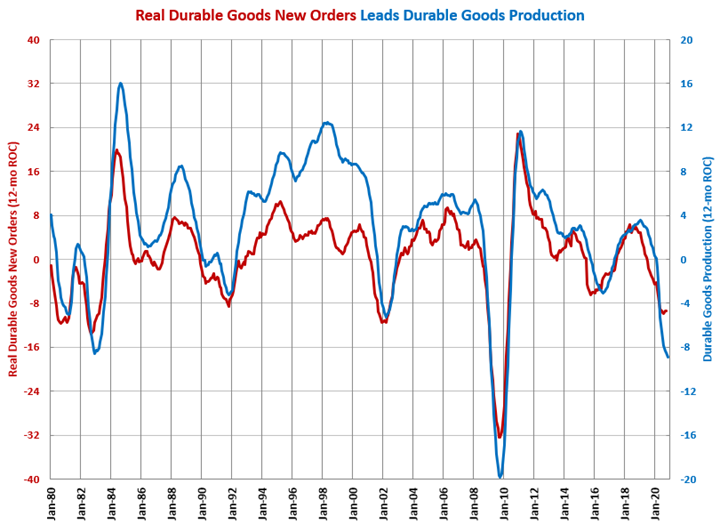Durable Goods Production Holds Steady
The month-over-month rate of contraction was close to 6.0% each of the last five months.
In November, the index for production of durable goods was 103.1. Compared with one year ago, the index contracted 4.7%, which broke a string of six consecutive months of decelerating contraction. The month-over-month rate of contraction was close to 6.0% each of the last five months.
The annual rate of change, which is easier to correlate with other data points, contracted 8.9% this month. This was the ninth consecutive month of accelerating contraction. The key leading indicator of production—durable goods new orders—appears to have bottomed out, according to its rate of change, and indicating that production should do the same soon. Also, consumer durable goods spending, which leads durable goods new orders, reached an all-time high for five months in a row, growing at an accelerating rate each of those four months.

We track industrial production and its leading indicators for a number of industries.
Accelerating Growth: appliances
Decelerating Growth: electronics/computers
Accelerating Contraction: aerospace, automotive, construction materials, durable goods, forming/fabricating (non-auto), furniture, industrial motors/hydraulics/mechanical components, machinery/equipment, medical, metalcutting job shops, military, oil/gas-field/mining machinery, petrochemical processors, power generation, primary metals, printing, pumps/valves/plumbing products, textiles/clothing/leather goods, wood/paper products
Decelerating Contraction: custom processors, food/beverage processing, hardware, HVAC, off-road/construction machinery, plastic/rubber products, ship/boat building





.JPG;width=70;height=70;mode=crop)
